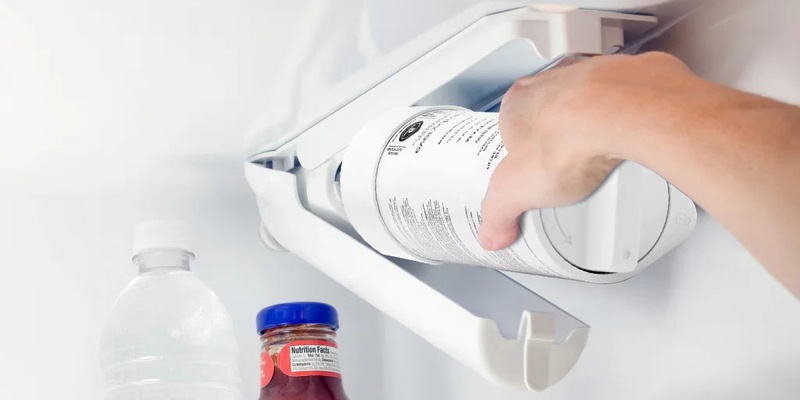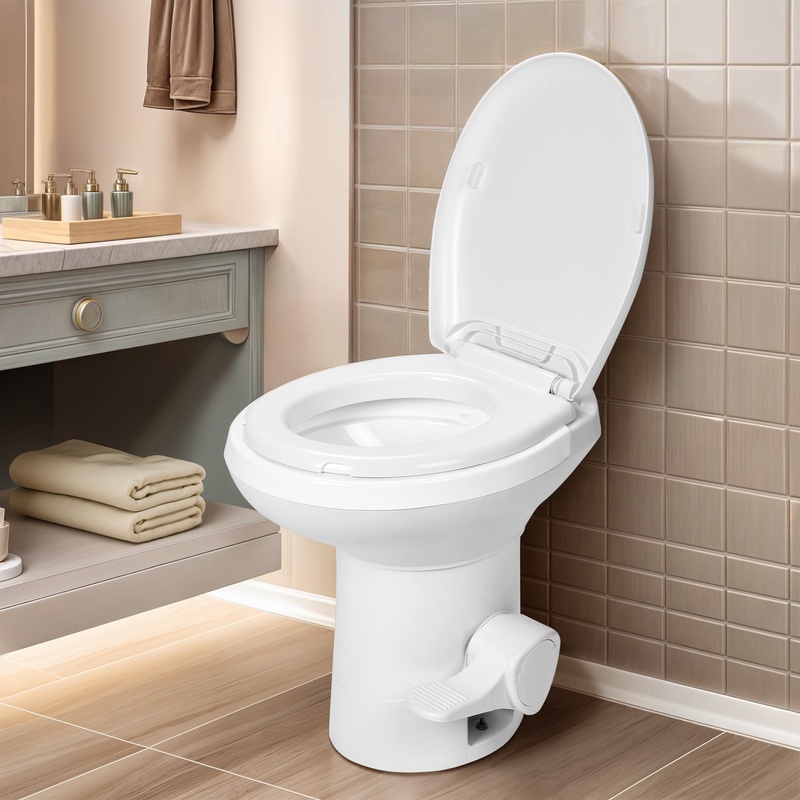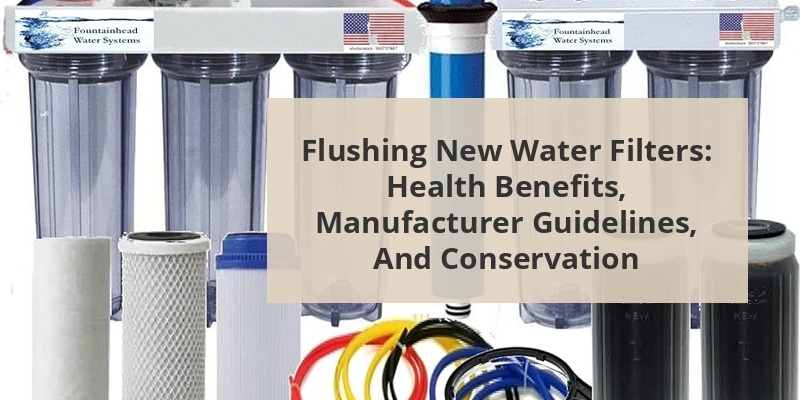Flushing a new water filter is an essential preparation step that manufacturers universally recommend before regular use. This process removes manufacturing residues, loose carbon particles, and other debris that might otherwise contaminate your drinking water or damage your appliance. Flushing also helps activate the filtration media, ensuring optimal performance and extending the filter’s lifespan. Skipping this critical step can lead to unpleasant tastes, odors, or even potential health concerns. Understanding why and how to properly flush your specific type of water filter will help guarantee you receive the full benefits of your filtration system from day one.
Water filters use various filtration media—including activated carbon, ceramic, ion exchange resins, and membrane technologies—to remove contaminants from water. During manufacturing, these filters invariably collect dust, loose carbon particles, and production residues that must be removed before regular use.
The flushing process involves running water through the newly installed filter for a specific period or volume, discarding this initial water rather than using it. This process differs significantly from normal filter operation, as its sole purpose is preparation rather than filtration for consumption.
While virtually all filters require flushing, the specifics vary based on filter type, brand, and design. Refrigerator filters, pitcher filters, under-sink systems, and whole-house filters each have unique flushing protocols designed for their specific construction and filtration media.
Content Navigation
The Purpose of Flushing a New Water Filter
Removing Manufacturing Residues
The primary purpose of flushing is to eliminate manufacturing byproducts that naturally occur during production. These can include:
- Carbon dust from activated carbon filters
- Plastic particles from housing components
- Preservatives used to maintain sterility
- Packaging dust and debris
- Anti-microbial agents applied during manufacturing
Without proper flushing, these substances can enter your drinking water, potentially causing unpleasant tastes, cloudy appearance, or even mild stomach discomfort in sensitive individuals.
Activating Filter Media
Many filtration media, particularly activated carbon, require initial wetting to reach optimal filtration capacity. The flushing process hydrates the filter media, opening micropores and preparing active sites for adsorption of contaminants. This activation enables the filter to begin working at peak efficiency immediately after the flushing process.
Ensuring Proper Water Flow
Flushing also helps establish proper water pressure and flow dynamics through the filter. This initial flow helps settle the filter media and remove any air pockets that might otherwise cause irregular filtration or reduced water flow during normal operation.
What Happens If You Don’t Flush a New Water Filter
Skipping the flushing step can lead to several undesirable outcomes, ranging from minor inconveniences to potential health concerns:
| Consequence | Impact |
|---|---|
| Black specks in water | Carbon particles visible in initially filtered water |
| Unpleasant taste or odor | Manufacturing residues affecting water quality |
| Reduced filter lifespan | Improper initialization affecting long-term performance |
| Reduced flow rate | Air pockets or improperly settled media restricting flow |
| Potential mild digestive discomfort | Consumption of manufacturing residues |
Furthermore, some appliance warranties may be voided if proper installation procedures, including flushing, aren’t followed according to manufacturer specifications.
How to Properly Flush Different Types of Water Filters

Flushing procedures vary significantly depending on filter type and design. Below are general guidelines for common filter types:
| Filter Type | Typical Flushing Requirement | Special Considerations |
|---|---|---|
| Refrigerator Filters | 3-5 gallons or 5-10 minutes of continuous flow | May require dispensing and discarding several batches |
| Pitcher Filters | 2-3 full pitcher cycles | Discard first 2-3 fillings before consuming |
| Under-Sink Systems | 3-5 gallons depending on complexity | Multi-stage systems may require more extensive flushing |
| Whole-House Filters | 15-20 gallons or more | May require flushing hot water lines separately |
| Faucet-Mounted Filters | 1-2 gallons or 5 minutes | Watch for initial water discoloration |
Step-by-Step Flushing Process
- Install the filter according to manufacturer instructions
- Turn on cold water at a moderate flow rate
- Allow water to run for the recommended time or volume
- Check for water clarity (should be clear, not cloudy or containing particles)
- If discoloration persists, continue flushing until water runs clear
- For some systems, repeat with hot water lines
Manufacturer Guidelines on Flushing Water Filters
While general principles apply across filter types, specific requirements can vary significantly between manufacturers. Always prioritize the instructions provided with your particular filter, as these are calibrated for your specific product.
| Brand Example | Typical Flushing Recommendation |
|---|---|
| Brita | Run cold water through for 15 seconds; discard first 3 fillings for pitchers |
| PUR | Run cold water for 5 minutes; discard first 2-3 pitchers |
| GE Refrigerator Filters | Dispense and discard 2 gallons (approximately 8 quarts) |
| Whirlpool | Run water continuously for 3 minutes |
| Culligan | Flush with 3-5 gallons or until water runs clear |
Some manufacturers recommend periodic flushing after extended periods of non-use (such as vacations) to maintain optimal performance. This secondary flushing typically requires less time than the initial installation flush.
Water Conservation During the Flushing Process

While flushing is necessary, you can minimize water waste through several approaches:
- Collect flush water for plants, gardens, or cleaning purposes
- Time the flushing process to coincide with other water needs
- Follow exact manufacturer guidelines rather than exceeding them unnecessarily
- Consider systems with less intensive flushing requirements if water conservation is a priority
Some newer filter designs specifically address water conservation with reduced flushing requirements, making them more environmentally friendly options for eco-conscious consumers.
Common Questions About Flushing Water Filters
Is the black water from a new filter harmful?
The black or gray water that sometimes appears during initial flushing typically contains carbon particles from activated carbon filters. While unsightly, these particles are generally not harmful if accidentally consumed in small amounts, though they may cause temporary digestive discomfort in sensitive individuals.
Can I use the water from initial flushing for anything?
Initial flush water should not be consumed, but can often be repurposed for watering plants (especially non-edible plants), cleaning, or toilet flushing. However, very dark initial flush water with significant particles may be unsuitable even for these purposes.
How often do I need to flush my filter?
A thorough flush is required when installing a new filter or replacement cartridge. Additionally, most manufacturers recommend a brief flush (15-30 seconds) after periods of non-use exceeding 2-3 days. This removes stagnant water and any bacterial growth that may have occurred in the system.
Tips for Getting the Best HVAC Prices
- Prioritize Quality Over Cost
The most critical factor in any HVAC project is the quality of the installation. Don’t compromise on contractor expertise just to save money. - Check for Rebates
Always research current rebates and incentives — they can significantly reduce your overall cost. - Compare Multiple Quotes
Request at least three estimates before making your choice. You can click here to get three free quotes from local professionals. These quotes include available rebates and tax credits and automatically exclude unqualified contractors. - Negotiate Smartly
Once you've chosen a contractor, use the proven strategies from our guide — How Homeowners Can Negotiate with HVAC Dealers — to get the best possible final price.

